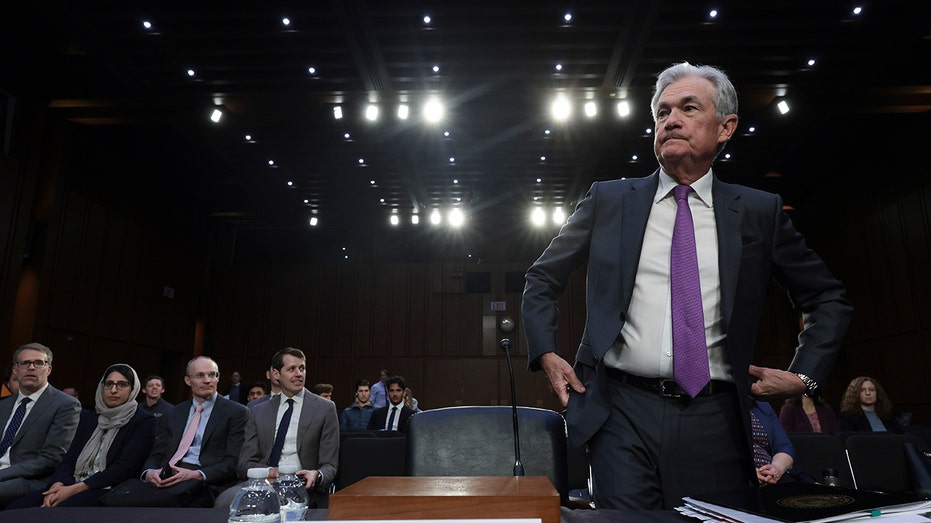IMF trims global growth outlook as banking turmoil raises risk of hard landing
Hard landing for global economy has become a 'much larger risk': IMF
Market 'isn't likely to go up a whole bunch' until it sees recession: Bob Doll
Crossmark Global chief investment officer Bob Doll predicts a trader's market for cheap stocks through the rest of this year.
The International Monetary Fund on Tuesday cut its global growth outlook for the year, warning the world economy faces the increased risk of a "hard landing" due to continued fallout from a spate of bank failures, higher interest rates and stubborn inflation.
The Washington-based institution said in its latest World Economic Outlook that global gross domestic product will grow by just 2.8% this year – which represents a 0.1 percentage point decline from its previous forecast in January – before rising to 3% in 2024.
"The major forces that affected the world in 2022… seem likely to continue into 2023," the report said. "But these forces are now overlaid by and interacting with new financial stability concerns. A hard landing – particularly for advanced economies – has become a much larger risk. Policymakers may face difficult trade-offs to bring sticky inflation down and maintain growth while also preserving financial stability."
JAMIE DIMON WARNS BANKING CRISIS HAS RAISED ODDS OF RECESSION

FILE PHOTO: International Monetary Fund (IMF) Managing Director Kristalina Georgieva arrive for the G20 Leaders' Summit in Bali, Indonesia, 15 November 2022. (Mast Irham/Pool via Reuters/File Photo / Reuters Photos)
The contrast is even sharper in developed nations, which are struggling to absorb the effects of tighter monetary policy after a decade of ultra-low interest rates. About 90% of advanced economies are expected to see a decline in GDP this year, with the IMF projecting meager growth of just 1.3% in 2023 and 1.4% next year.
The U.S. economy is likely to grow just 1.6% this year and 1.1% next year, according to the IMF, a slight improvement from the January projections.
"A return of the world economy to the pace of economic growth that prevailed before the bevy of shocks in 2022 and the recent financial sector turmoil is increasingly elusive," the repot said. "More than a year after Russia’s invasion of Ukraine and the outbreak of more contagious COVID-19 variants, many economies are still absorbing the shocks. The recent tightening in global financial conditions is also hampering the recovery."
HOW THE BANKING CRISIS COULD HAMMER SMALL BUSINESSES
With central banks driving up interest rates in order to fight inflation, the road to economic recovery seems more elusive than ever. Over the medium term, the prospects for global growth seem "dimmer than in decades."
Although inflation has been steadily declining since mid-2022 in the face of tighter monetary policy, price pressures remain elevated, leaving household budgets strained. The IMF projected that global headline inflation will decline from 8.7% in 2022 to 7% in 2023 – double what the institution estimated just one year ago.

Federal Reserve Chair Jerome Powell arrives for testimony before the Senate Banking Committee March 7, 2023, in Washington, DC. ((Photo by Win McNamee/Getty Images) / Getty Images)
Returning inflation to target levels is expected to take until 2025 in most cases.
Sticky inflation could force central banks to continue hiking interest rates, despite the bleak outlook and recent financial system upheaval in the U.S., Switzerland and Germany.
CLICK HERE TO READ MORE ON FOX BUSINESS
The problems in the financial sector began with the implosion of Silicon Valley Bank in early March. Rising interest rates sent the value of dated, long-term securities tumbling, and a sudden rush of customer withdrawals forced them to sell those assets at a loss. Regulators seized SVB on March 10 and took control of Signature Bank – which was besieged by similar problems – two days later.
Within days, U.S. authorities took extraordinary steps to contain the fallout from the banks' failures and shore up wavering confidence in the financial system, including protecting all deposits at the two institutions – even those accounts that exceeded the Federal Deposit Insurance Corporation's $250,000 insurance limit.





















